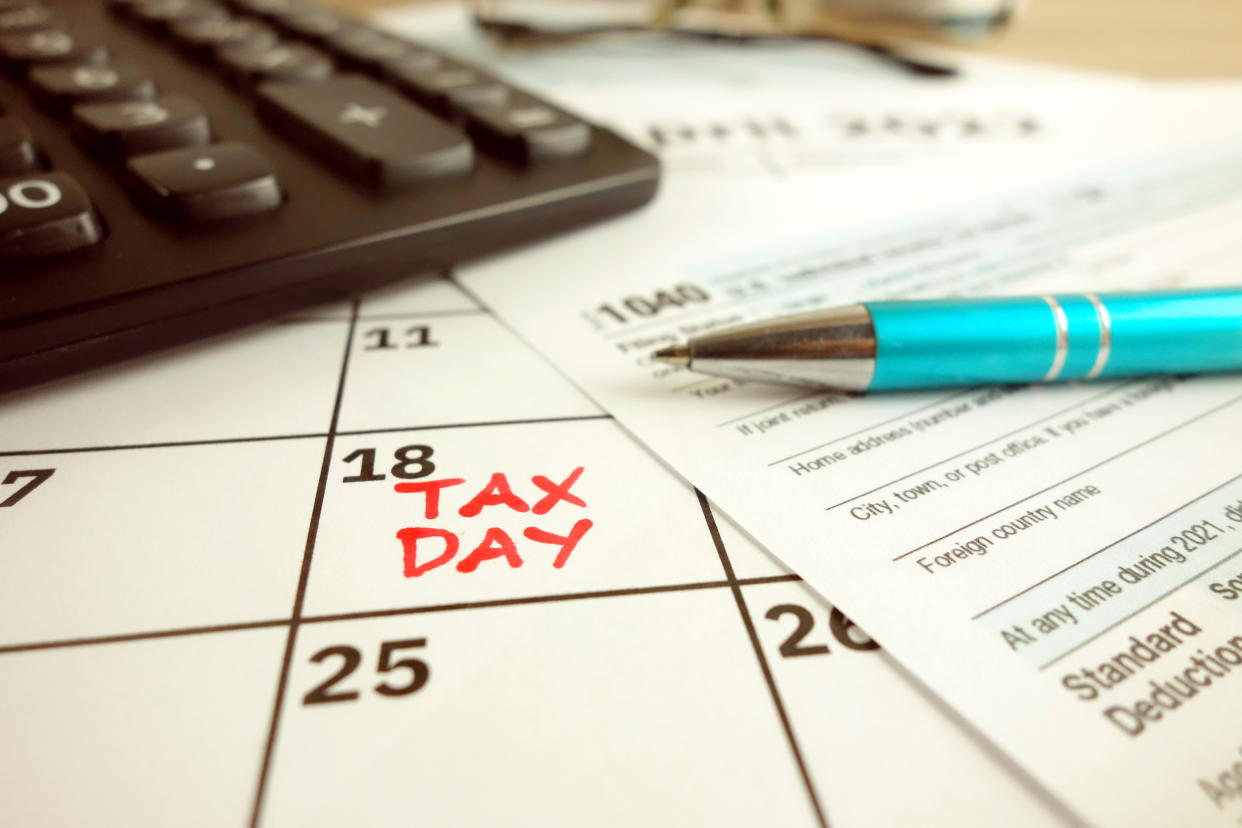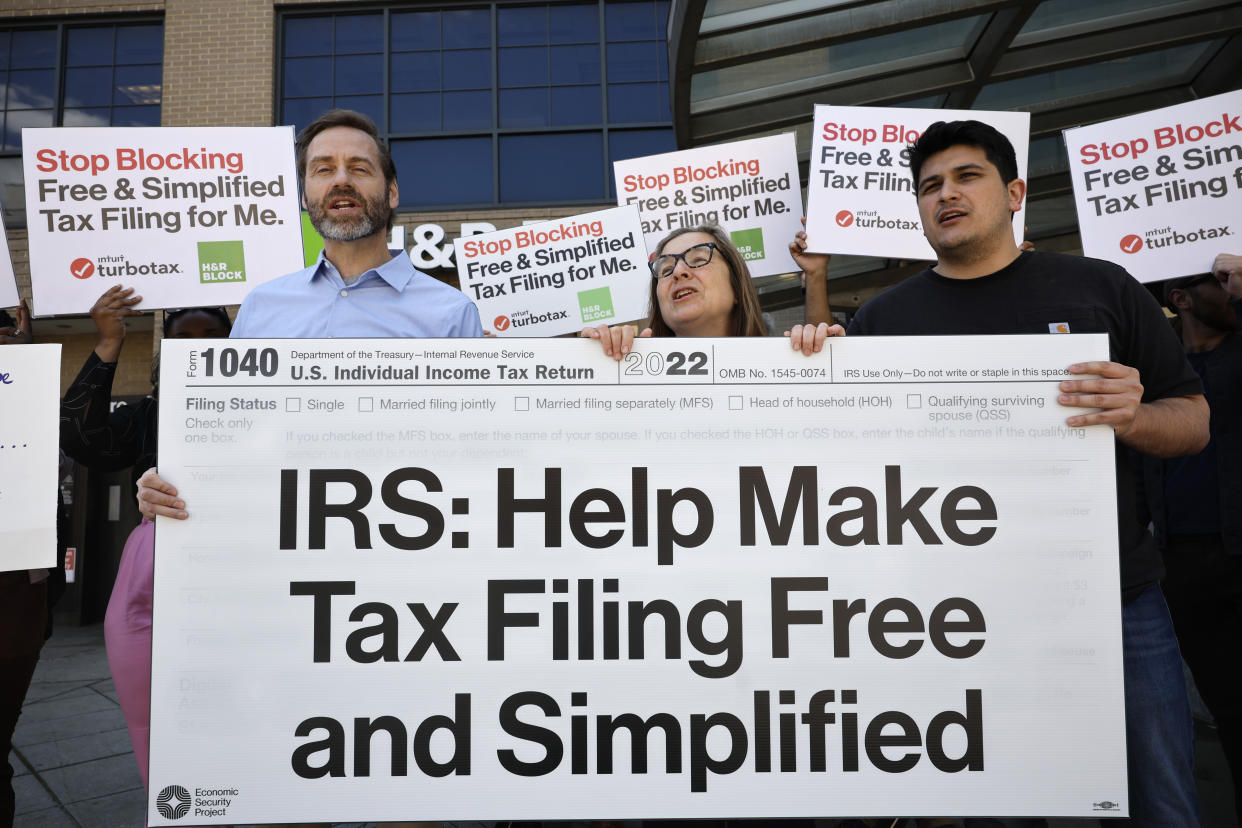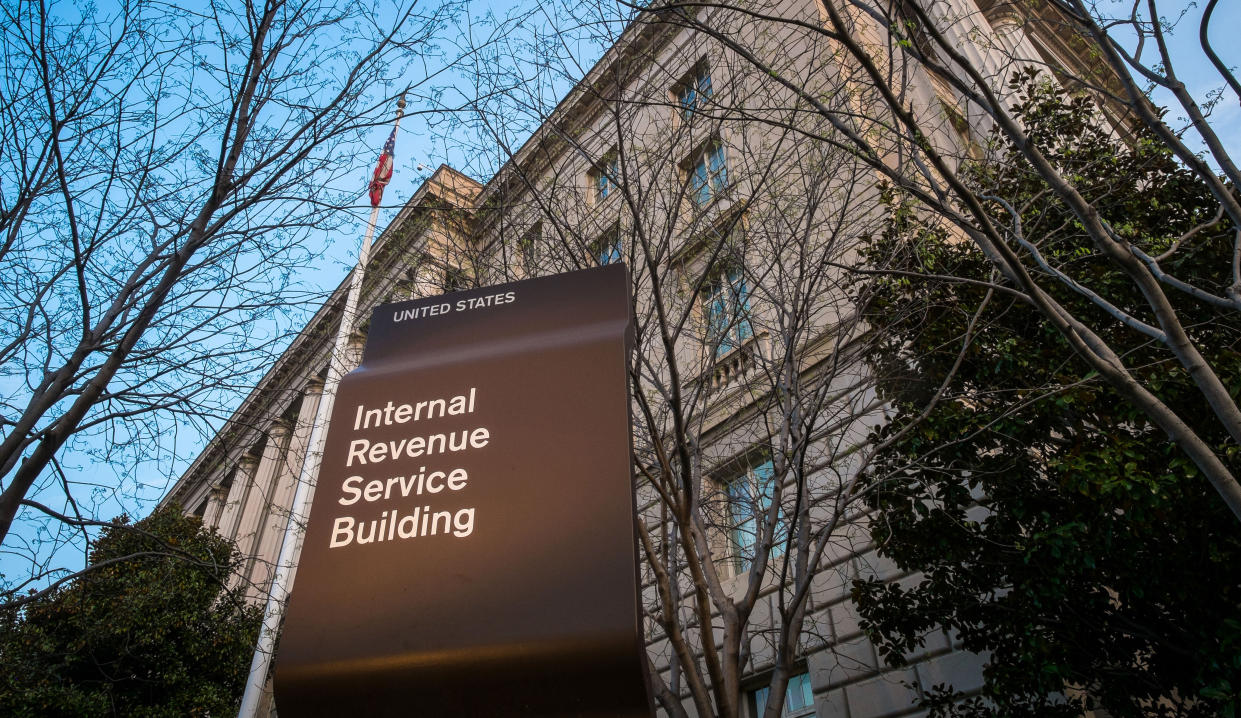Tax day is here. Here's everything you need to know
The tax deadline is here.
Today — April 18, 2023 — is the last day to file your 2022 federal tax return on time. Otherwise, you could get hit with a late-filing penalty and potentially a late-payment penalty if you owe taxes and don't pay.
If you can't file by the end of the day, you should request an extension.
Here's what to know about filing your taxes, requesting an extension, and paying the Internal Revenue Service.

How to file your taxes
The simplest way to avoid delays is by filing your return electronically and opting for direct deposit for your tax refund — if you're getting one. If you decide to file a paper return, it must be postmarked April 18 to be considered on time.
"In addition to e-filing, tax software helps individuals steer clear of mistakes by doing the math," the IRS said in a bulletin this week. "It guides people through each section of their tax return using a question-and-answer format."
Make sure to have all the necessary paperwork to fill out a correct return. Those include:
Forms W-2 from employers
Form 1099-G from state unemployment offices
Forms 1099 from banks and other payers
Form 1095-A from the Health Insurance Marketplace for those claiming the premium tax credit
Records of virtual currency transactions
There are several options to file your taxes for free if you meet certain income requirements. The IRS Free File program allows those who made $73,000 or less in 2022 to prepare and e-file tax returns for free.
The Volunteer Income Tax Assistance (VITA) program — managed by the IRS — offers free tax prep for moderate- to low-income individuals, disabled individuals, senior citizens, or those who have a language barrier. The Tax Counseling for the Elderly (TCE) program — also managed by the IRS — provides free tax help for taxpayers 60 years and older.
The agency also partners with certain online tax software companies that electronically file federal returns at no cost, with some offering free filing for state returns, too. Here are more details on filing for free.

How to file for an extension
If you need more time to file your federal tax return, you must request an extension by the tax deadline. An extension will give you six extra months — until Oct. 16, 2023 — to file your taxes.
There are three ways to request an extension — through the IRS website, using tax prep software, or by paper filing — and most can be done for free.
But remember: Filing for an extension doesn't mean your tax payment has been extended. You must still pay what you estimate you owe by April 18.
More information can be found here about filing for an extension.
How to pay your tax bill
The IRS offers many ways to pay your tax liability.
You can pay electronically through your bank account via your e-file software or through the "Direct Pay" function on the IRS portal. You can pay by debit or credit card through IRS-approved third-party vendors, which accept Visa, Mastercard, Discover, American Express, Paypal, and Click to Pay. Fees may apply.
You can also pay by check or money order by mailing it in an envelope with the form voucher corresponding to your tax return. If you want to pay by cash, there are 7,000 participating retail partners nationwide that accept these payments. Here are more details about each option.
If you can't pay your tax liability in full by the tax deadline, the IRS offers several repayment plans, including a short-term repayment plan (less than 180 days), a longer-term installment plan (more than 180 days), and a settlement option called an offer in compromise. The last option allows taxpayers to settle their tax bill for less than what they owe, but the time-consuming process is reserved only for those who would experience undue financial hardship if they paid their entire tax liability. Learn more about your options here.
What happens if you don't file or pay on time

If you don't file your return or pay your taxes on time, the IRS can charge two penalties: a failure to file penalty and a failure to pay penalty. Here's how those are calculated.
The failure to file penalty is equal to 5% of your unpaid taxes for each month or portion of a month that your tax return is late. The penalty doesn't exceed 25% of your unpaid taxes. If your return is over 60 days late, the minimum penalty is $435 or 100% of the tax required, whichever is less.
The failure to pay penalty is equal to 0.5% of your unpaid taxes for each month or portion of a month your tax bill remains unpaid. The penalty won’t exceed 25% of your unpaid taxes. If you don’t pay your tax bill within 10 days of receiving a notice from the IRS, the penalty increases to 1% per month or partial month.
Both penalties accrue interest.
For more information, check the IRS website on failure to file and failure to pay penalties.
Rebecca is a reporter for Yahoo Finance. Follow her on Twitter at @RebeccaChenP. Gabriella is a personal finance reporter at Yahoo Finance. Follow her on Twitter @__gabriellacruz. Ronda is a personal finance senior reporter for Yahoo Finance and attorney with experience in law, insurance, education, and government. Follow her on Twitter @writesronda.
Read the latest financial and business news from Yahoo Finance
